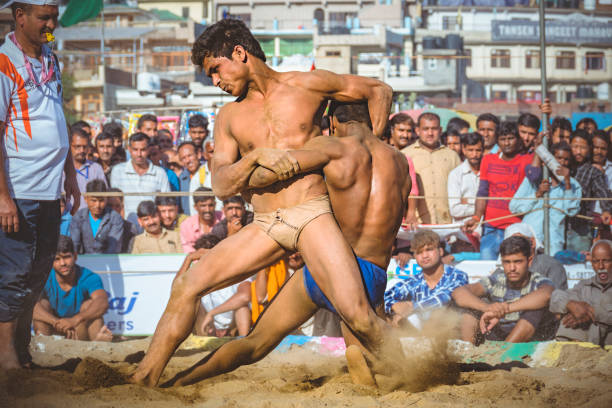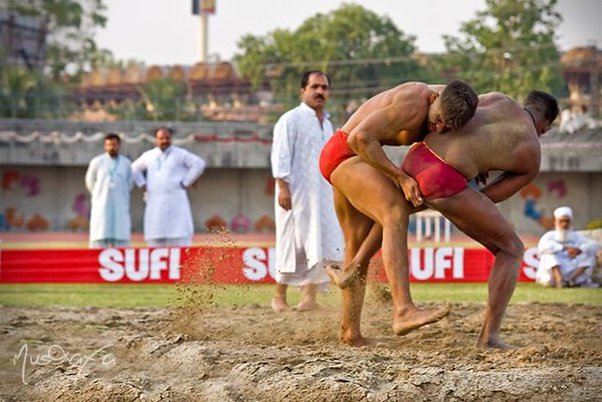Mud Wrestling (Desi Kushti)
Kushti or Pehlwani is a form of wrestling from the Indian Subcontinent. It was developed during the Mughal Empire. The practitioners of this sport are referred to as a Pehlwans while the teachers are known as Ustads. Kushti is taught at a training ground known as an Akhara, which is usually made of mud, clay mixed with oil and ground turmeric. Water is added every few days to keep it at the right consistency; soft enough to avoid injury but hard enough so as not to impede the wrestlers’ movements. During wrestling or practice sessions, every wrestler has to wear Langot, a type of an attire consisting of a loincloth or underwear which is usually worn by the Indian mud wrestler before entering the Akhara. Kushti isn’t just a sport — it’s an ancient subculture where wrestlers live and train together and follow strict rules on everything from what they can eat to what they can do in their spare time. The focus is on living a pure life, building strength and honing their wrestling skills.

Kushti wrestlers are known as pehlwans, and the sport is known as pehlwani in Pakistan. The sport evolved during the Mughal Empire, roughly around the 17th century C.E. It combines native Indian malla-yuddha wrestling (a sport dating back 2,600 years) with influences from Persian varzesh-e bastanil wrestling.
Kushti wrestlers had great success in the 2008 Beijing Olympics, and since then Indian authorities have sought to modernize the practice by shutting some traditional gyms.
Rules
Kushti in Bharatpur
Wrestling competitions known as dangal or kushti, are held in villages and as such are variable and flexible. The area is either a circular or square shape, measuring at least fourteen feet across. Rather than using modern mats, South Asian wrestlers train and compete on dirt floors. Before training, the floor is raked of any pebbles or stones. Buttermilk, oil, and red ochre are sprinkled to the ground, giving the dirt its red hue. Water is added every few days to keep it at the right consistency; soft enough to avoid injury but hard enough so as not to impede the wrestlers’ movements. Every match is preceded by the wrestlers throwing a few handfuls of dirt from the floor on themselves and their opponent as a form of blessing. Despite the marked boundaries of the arena, competitors may go outside the ring during a match with no penalty. There are no rounds but the length of every bout is specified beforehand, usually about 25–30 minutes. If both competitors agree, the length of the match may be extended. Match extensions are typically around 10–15 minutes.
Unlike mat-based wrestling, there is no point scoring system; a win is achieved by pinning the opponent’s shoulders and hips to the ground simultaneously, although victory by knockout, stoppage or submission is also possible. In some variations of the rules, only pinning the shoulders down is enough. Bouts are overseen by a referee inside the ring and a panel of two judges watching from the outside
Techniques
It has been said that most of the moves found in the wrestling forms of other countries are present in kushti, and some are unique to the Indian subcontinent. These are primarily locks, throws, pins, and submission holds. , kushti does not permit strikes or kicks during a match. Among the most favoured manoeuvres are the dhobi paat (shoulder throw) and the kasauta (strangle pin). Other moves include the baharli, dhak, machli gota and the multani.

